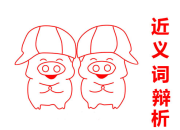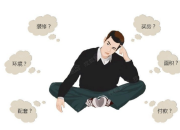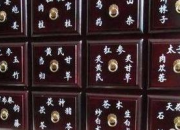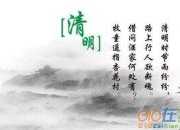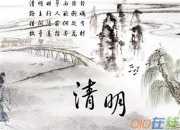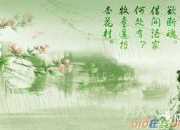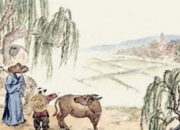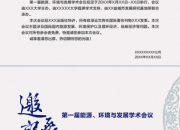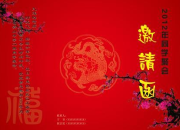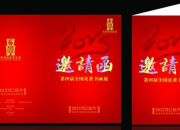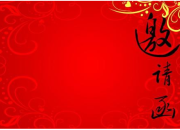胸有成竹成语故事中英对照
时间:2021-08-31胸有成竹成语故事中英对照
In the song Dynasty (960-1279),there was a scholar whose name was Wen Tong and who styled himself Yuke. He was not only admired by others for his great learning, but also enjoyed widespread renown for his bamboo drawing. Every day there were always quite a few peoply who called at his house to ask for one of his bamboo drawings.
北宋画家文同,字与可。他画的竹子远近闻名,每天总有不少人登门求画。文同画竹的妙诀在哪里呢?
Actually, Wen Tong loved bamboos so much that he had grown various bamboos everywhere around his house. No matter what season it was and no matter whether it was sunny or rainy, he used to go to the bamboo forest to observe how they were growing. He pondered over the lenght and breadth of the bamboo poles as well as the shapes and colours of the leaves. Whenever he had gained a new understanding, he went back to his study, spread a piece of paper and prepareed some ink by rubbing an ink stick on an ink slab, and drew what was in his mind on the paper. Through accumulation over a long period of time, the images of the bamboo in different seasons, under different weather conditions and at different moments were deeply imprinted in his mind.So whenever he stood before the paper and picked up a painting brush with concentrated attention, the various forms of the bamboo which he had observed at ordinary times at once rose before his eyes. And so every time he was drawing bamboos he appeared confident and at ease, and all the bamboos he had painted were very vivid and true to lift.
原来,文同在自己家的房前屋后种上各种样的竹子,无论春夏秋冬,阴睛风雨,他经常去竹林观察竹子的生长变化情况,琢磨竹枝的长短粗细,叶子的形态、颜色,每当有新的感受就回到书房,铺纸研墨,把心中的印象画在纸上。目积月累,竹子在不同季节、不同天气、不同时辰的形象都深深地印在他的心中,只要凝神提笔,在画纸前一站,平日观察到的各种形态的竹子立刻浮现在眼前。所以每次画竹,他都显得非常从容自信,画出的竹子,无不逼真传神。
When people spoke highly of his paintings, he always said modestly that he had just put the images of the bamboo imprinted in his mind on the paper.
当人们夸奖他的画时,他总是谦虚地说:“我只是把心中琢磨成熟的竹子画下来罢了。”
A young man wanted to learn bamboo drawing; when he knew that Chao Buzhi had made a profound study of Wen Tong's art of drawing, he went to Chao Buzhi for instruction. Chao Buzhi wrote a poem to him. In the poem, there are the following two lines:
When Yuke was painting the bamboos,
He bad their images ready in his bosom.
有位青年想学画竹,得知诗人晁补之对文同的画很有研究,前往求教。晃补之写了一首诗送给他,其中有两句:“与可画竹,胸中有成竹。”
Later people have summarized the lines as " having had the images of the bamboo ready in one's bosom," which means having had ready plans or designs in one's mind before doing a certain job so that its success is guaranteed. It is also used go mean being calm and cool - headed in dealing with things.
“胸有成竹”,比喻做事之前已作好充分准备,对事情的成功已有了十分的把握;又比喻遇事不慌,十分沉着。
This story comes from an article writted by Su Shi concerning Wen Yuke's art of bamboo drawing.
延伸阅读:
指鹿为马-中国成语故事中英对照
Calling a Stag a Horse 指鹿为马
In the reign of Emperor the Second of the Qin Dynasty (221-207 B.C.), the prime minister Zhao Gao, obsessed with ambitions, was planning to usurp the throne day and night. But he did not know how many of the ministers in the court were allowed to be ordered about by him and how many of them were his opponents. So he thought out a way to test how high his prestige among the ministers was and also to find out who dared to oppose him.
秦二世时,丞相赵高野心勃勃,日夜盘算着要篡夺皇位。可朝中大臣有多少人能听他摆布,有多少人反对他,他心中没底。于是,他想了一个办法,准备试一试自己的威信,同时也可以摸清敢于反对他的人。
One day when court was held, Zhao Gao let someone bring a stag to the court and, with a broad smile on his face, he said to Emperor the Second of the Qin Dynasty:"Your Majesty, here is a fine horse I'm presenting to you." Looking at the animal, Emperor the Second thought that it was obviously a stag and that it couldn't be a horse. So he said smilingly to Zhao Gao:"Mister Prime Minister, you are wrong. This is a stay. Why do you say it is a horse?" Remaining calm, Zhao Gao said:"Will your Majesty please see more clearly? This really is a horse that covers a thousand li a day." Filled with suspicion, Emperor the Second looked at the stag again and said:"How can the antlers be grown on the head of a horse?" Turning around and pointing his finger at the ministers, Zhao Gao said in a loud voice:"if our Majesty do not believe me, you can ask the ministers."
一天上朝时,赵高让人牵来一只鹿,满脸堆笑地对秦二世说:“陛下,我献给您一匹好马。”秦二世一看,心想:这哪里是马,这分明是一只鹿嘛!便笑着对赵高说:“丞相搞错了,这里一只鹿,你怎么说是马呢?”赵高面不改色心不跳地说:“请陛下看清楚,这的确是一匹千里马。”秦二世又看了看那只鹿,将信将疑地说:“马的头上怎么会长角呢?”赵高一转身,用手指着众大臣,大声说:“陛下如果不信我的话,可以问问众位大臣。”
The nonsense of Zhao Gao made the ministers totally at a lose, and they whispered to themselves: What tricks was Zhao Gao playing? Was it not obvious whether it was a stag or a horse? But when they saw the sinister smile on Zhao Gao's face and his two rolling eyes which were gazing at each of them, they suddenly understood his evil intentions.
大臣们都被赵高的一派胡言搞得不知所措,私下里嘀咕:这个赵高搞什么名堂?是鹿是马这不是明摆着吗!当看到赵高脸上露出阴险的.笑容,两只眼睛骨碌碌轮流地盯着赵高脸上露出阴险的笑容,两只眼睛骨碌碌轮流地盯着每个人的时候,大臣们忽然明白了他的用意。
Some of the ministers who were timid and yet had a sense of right eousness did not dare to say anything, because to tell lies would make their conscience uneasy and to tell the truth would mean that they would be persecuted by Zhao Gao later. Some ministers with a sense of justice persisted that it was a stag and not a horse. There were still some crafty and fawning ministers who followed Zhao Gao closely in ordinary times. They immediately voiced their support to Zhao Gao, saying to the emperor:"This really in a horse that covers a thousand li a day."
一些胆小又有正义感的人都低下头,不敢说话,因为说假话,对不起自己的良心,说真话又怕日后被赵高所害。有些正直的人,坚持认为是说明书而不是马。还有一些平时就紧跟赵高的奸佞之人立刻表示拥护赵高的说法,对皇上说,“这确是一匹千里马!”
After the event, Zhao Gao punished by various means those ministers with a sense of justice who were not obedient to him, even with whole families of some of those ministers executed.
事后,赵高通过各种手段把那些不顺从自己的正直大臣纷纷治罪,甚至满门抄斩。
This story appears in "The Life of the First Emperor of the Qin Dynasty" in The Historical Records written by Sima Qian. From this story people have derived the set phrase "calling a stag a horse" to mean deliberately misrepresenting some thing and misleading the public.
故事出自《史记·秦始皇本纪》。成语“指鹿为马”比喻故意颠倒是非,混淆黑白。
